Debenhams Business Plan PDF

| Title | Debenhams Business Plan |
|---|---|
| Author | Fekry Talaat |
| Course | Contemporary Management |
| Institution | Arab Academy for Science, Technology & Maritime Transport |
| Pages | 55 |
| File Size | 1.5 MB |
| File Type | |
| Total Downloads | 11 |
| Total Views | 145 |
Summary
Debenhams Business Plan...
Description
STRATEGIC MANAGEMENT PROJECT
Debenhams Business Plan
Created by: Ahmed Mohamed Ahmed Mohamed Fekry Talaat Mohamed Yehia Mohamed Moheeb EL-Wassimi Mahmoud Samir Khalil Ibrahim Samy Mahmoud Samy
MBA, Group S6 Graduate School of Business Arab Academy for Science, Technology & Maritime Transport
Represented To Dr. Raafat Shehata
TABLE OF CONTENTS Chapter 1 ....................................................................................................................................................... 4 INTRODUCTION ........................................................................................................................................ 4 1.1.
Company Background ................................................................................................................... 4
1.2.
Vision and Mission ........................................................................................................................ 5
1.3.
Corporate Social Responsibility .................................................................................................... 5
Chapter 2 ....................................................................................................................................................... 9 VISION – MISSION ANALYSIS ................................................................................................................ 9 2.1.
Importance (Benefits) of Vision and Mission Statements ............................................................ 9
2.2.
Characteristic of a Mission Statement ........................................................................................ 10
2.3.
Mission Statement Components ................................................................................................11
2.4.
Vision and Mission Relation: Is It Achievable?................................................................................ 13
Chapter 3 ..................................................................................................................................................... 14 EXTERNAL ASSESSMENT ..................................................................................................................... 14 3.1
Michael Porter’s Five-Forces Model ........................................................................................... 14
3.2
External Analysis (Opportunities & Threats):.............................................................................. 19
3.3
PESTLE analysis: ..........................................................................................................................20
Chapter 4 ..................................................................................................................................................... 24 INTERNAL ASSESSMENT ...................................................................................................................... 24 4.1
Marketing Mix 7Ps Analysis....................................................................................................... 24
4.2
Internal Analysis (Strengths & Weaknesses) .............................................................................. 29
4.3
Financial Analysis: ....................................................................................................................... 31
Chapter 5 ..................................................................................................................................................... 35 STRATEGIES IN ACTION ....................................................................................................................... 35 5.1
The Strategies .............................................................................................................................35
5.2
Michael Porter’s Five Generic Strategies .................................................................................... 36
Chapter 6 ..................................................................................................................................................... 37 STRATEGY ANALYSIS AND CHOICE ................................................................................................. 37 6.1
The Strengths-Weaknesses-Opportunities-Threats (SWOT) Matrix ........................................... 37
6.2
The Boston Consulting Group (BCG) Matrix ............................................................................... 38
6.3
Internal - External (IE) Matrix...................................................................................................... 42
6.4
The Grand Strategy Matrix.......................................................................................................... 43
Chapter 7 ..................................................................................................................................................... 45 IMPLEMENTING STRATEGIES: MARKETING, FINANCE/ACCOUNTING, AND MIS ISSUES ... 45 7.1
Marketing .................................................................................................................................... 45
7.2
Finance ........................................................................................................................................ 47
7.3
Management Information System .............................................................................................. 48
Chapter 8 ..................................................................................................................................................... 51 STRATEGY EVALUATION AND GLOBALIZATION CULTURE ...................................................... 51 8.1
The Balanced Scorecard .............................................................................................................. 51
8.2
Globalization Culture ..................................................................................................................52
Chapter 9 ..................................................................................................................................................... 53 CONCLUSION ........................................................................................................................................... 53 9.1
Debenhams’s Competitive Advantage ........................................................................................ 53
9.2
Vision, Mission, and Strategies ................................................................................................... 54
Chapter 1
INTRODUCTION
1.1. Company Background Debenhams traces its history back to 1778 when William Clark established a drapers store at 44 Wigmore Street in London's West End selling expensive fabrics, bonnets, gloves and parasols. In 1813 William Debenham invested in the firm which then became Clark & Debenham. The first store outside London was opened in Cheltenham in 1818, an exact replica of the Wigmore Street store. In the ensuing years the firm prospered from the Victorian fashion for family mourning by which widows and other female relatives adhered to a strict code of clothing and etiquette. When Clement Freebody invested in the firm in 1851 it was renamed Debenham & Freebody. As well as its retail stores, a wholesale business was established selling cloth and other items to dressmakers and other large retailers. Many acquisitions of retail, wholesale and manufacturing businesses were undertaken in the remainder of the nineteenth century and offices opened in South Africa, Australia, Canada and China. Acquisitions continued into the next century and in 1905 Debenhams Ltd. was incorporated. In 1919, the business merged with Marshall & Snellgrove and in 1920 purchased Knightsbridge retailer Harvey Nichols. Seven years later the involvement of the Debenham family finally ended and the business became a public company for the first time in 1928. By 1950, Debenhams was the largest department store group in the UK, owning 84 companies and 110 stores. It continued to grow and in 1966 central buying was introduced for the first time. 1976 saw the acquisition of Brown's of Chester, the only store which retained its original name when all others were rebranded Debenhams in 1977 (this continues to be the case even today). From 1985 to 1998, Debenhams was part of the Burton Group. During that time the business was repositioned with the introduction of exclusive merchandise – most notably Designers at Debenhams which was launched in 1993 – and a significant increase in the number of stores. In 1997 the first international franchise store opened in Bahrain.
Following demerger from the Burton Group, Debenhams was listed on the London Stock Exchange until 2003 when it was acquired by Baroness Retail Ltd. Debenhams returned to the London Stock Exchange in May 2006. In September 2007, the Company acquired nine stores from Roches in the Republic of Ireland. In November 2009, Debenhams acquired Magasin du Nord, the leading department store chain in Denmark. In February 2019, Debenhams announced a strategic sourcing partnership with global supply chain solutions provider Li & Fung. In April 2019, Debenhams plc entered administration and delisted. The operating businesses, under Debenhams Group Holdings Ltd, were acquired by a consortium of lenders, Celine UK NewCo 1 Ltd. Debenhams gained access to £200m of new funding and has embarked on a restructuring plan.
1.2. Vision and Mission The Company vision as stated on the website: “We will deliver Growth by becoming a Destination for "Social Shopping" and offering exciting new products and services; being driven by Digital, with mobile unifying our channels and our interaction with customers, as well as broadening our reach; and being Different in how we create and manage our brands and product, supported by a more innovative culture.” Debenhams states that its mission is that “We aim to make shopping confidence-boosting, sociable and fun for our customers, through our 246 department store destinations and online in more than 60 countries. We give our customers around the world a unique, differentiated and exclusive mix of own brands, international brands and concessions.”
1.3. Corporate Social Responsibility The company stated on their website that Debenhams social responsibilities are divided into three main pillars:
Equality: Striving for equality and diversity throughout workforce and supply chain.
Debenhams are involved in a number of Ethical
Trade programs that aim to reduce inequalities within their global supply chains, focusing on life
skills that will empower women and their communities. In 2015, Debenhams partnered with Swasti, an International Health Resource Center based in Bangalore, India to implement their LIFE program (Life Skills for Empowering Women), By delivering a number of training modules, the program objective was to raise awareness and empower workers, particularly women, working in the Debenhams Indian supply chain. For years Debenhams has played a pioneering role in championing diversity and promoting body confidence. From featuring fashion collections on men and women of diverse backgrounds, body shapes and ethnicity they have teamed with Help for Heroes to feature rehabilitated troops in a menswear campaign and worked with women up to the age 70, a Paralympian athlete to portray their womenswear offer and size 18 model to showcase their swimwear.
Community: A sustainable business knows the importance of engaging with people.
Debenhams raised £1.5m for their national charity partners’ Look Good Feel Better, Help For Heroes, Breast Cancer Now, Children In Need and Make A Wish Ireland. These funds are generated from a variety of activities including; a donation of profits from the sale of exclusive products; the sale of charity partners’ merchandise; an annual supplier and business partner funded charity ball as well as a range of colleague challenges
from a 500km bike ride to bake sales. Customer and colleague donations raised throughout the year linked to specific events and causes complete the effort. The company also raise funds and make donations to the Debenhams Retirement Association, Retail Trust and Regent’s Place Community Fund. Further funds are raised by the Salvation Army Trading Company through the donation of unwanted and unsalable goods. They have developed a number of volunteering initiatives to empower their colleagues to support their partner charities. Over 400 of the beauty sales consultants have voluntarily completed training with Look Good Feel Better to advise those undergoing treatment for cancer on how to deal with physical side effects. The company also have a number of community initiatives in place to support activities taking place in the areas that they serve including hosting Look Good Feel Better workshops in a number of our stores where customers can receive advice and support from trained colleagues. In addition, they have worked with Help For Heroes to support the Band of Sisters and create respite areas in our restaurants to meet and socialize with women who understand what it is like to care for a loved one, who has been wounded injured or sick as a result of their service. For one participant, the Debenhams Band of Sisters event was their first touch point with Help for Heroes and was the first time she felt strong enough to leave her loved one at home in 3 ½ years. This opportunity allows much needed time for self-care and enables individuals to find new confidence following periods of social isolation.
Environment: Impact on the environment is an essential part of a sustainable business.
Recycling: Debenhams have teamed up with Newlife to recycle their old stock and fabric waste. Not only does this give our old clothes a new lease of life, it supports Newlife’s work to change the lives of disabled and terminally ill children across the UK. From October 2019, all clothes at stores and support centers are recycled by Newlife.
Emissions: Debenhams have reported their greenhouse gas (GHG) emissions for UK,
Irish and Danish operations since 2008. Since then, their footprint boundary has evolved to include areas such as other international offices, packaging, production of hangers, and manufacture of catalogues, brochures and direct mail. With the support of Ricardo Energy & Environment, the company have applied the GHG Protocol Corporate Accounting and Reporting Standard, and the UK Government Conversion Factors for Company Reporting, 2018, to calculate carbon emissions. Their annual reporting year is 3rd September 2017 to 1st September 2018. For the last two years Debenhams followed the GHG Protocol’s new, Scope 2 emissions reporting guidance and used two different quantification methods: location-based and marketbased. Energy: In 2018, Debenhams invested over £3 million and retrofitted LED lighting in 12 stores. These projects have not only delivered excellent results in reducing energy use but have also led to a more comfortable customer environment. Debenhams is committed to continuously improving the energy efficiency of their buildings and operations and continue to make progress towards their group wide carbon target of reducing absolute operational CO2e emissions by 10% by 2020 against our 2007/08 baseline. This will drive us to deliver continuous improvements in energy efficiency and explore innovative technologies to help reduce energy and carbon usage across their stores, logistics operations and offices. Animal Testing and Animal Welfare: To ensure all animal derived materials are sourced from farms practicing good animal husbandry to protect the fair and ethical treatment of animals. - Animal Testing – Prohibited
- Animal Fur – Prohibited - Endangered Species – Prohibited
Chapter 2
VISION – MISSION ANALYSIS 2.1. Importance (Benefits) of Vision and Mission Statements Debenhams clearly has a formalized mission statement and they are currently striving to achieve their mission through strategies implemented though their objectives in long-term period. It is said that there are six benefits of having carefully-developed mission statement: 1. To ensure unanimity of purpose within the organization 2. To provide a basis, or standard, for allocating organizational resources 3. To establish a general tone or organizational climate 4. To serve as a focal point for individuals to identify with the organization’s purpose and direction, and to deter those who cannot from participating further in the organization’s activities 5. To facilitate the translation of objectives into a work structure involving the assignment of tasks to responsible elements within the organization 6. To specify organizational purposes and then to translate these purposes into objectives in such a way that cost, time, and performance parameters can be assessed and controlled
In case of Debenhams, their mission statement clearly and firmly emphasizes their purpose, which is to be an environmental-friendly company and contribute to society development. Their purpose is also their base in making allocation to their resources in which we know that Debenhams allocates more on creating an eco-friendly operations and boosting its supply and value chain other than spending for marketing campaigns. The mission statement, combined with its corporate culture, somehow produces a conducive organizational climate for achieving their objectives.
Moreover, since the mission statement is very clear and direct, it is easier for the employees to set their mindset and behavior to be aligned with the company’s objective. In other words, employees know what they should do, how they should do it, in order to achieve those objectives. Finally, Debenhams as a determined company, with the purposes of being a fast fashion company that concern its environmental-friendliness, combined with their longterm objectives that are derived from their mission statement, create somewhat a clear standard of their cost, time, and performance assessment, and it has been working well so far. 2.2. Characteristic of a Mission Statement A mission statement is more than a statement of specific details. A good mission statement sets the company’s objectives and strategies without limiting the management’s creativity. It also needs to be broad enough to reconcile the stakeholder’s differences. Moreover, a good mission
statement indicates
the relative attention that
the
organization/company will devote to; it reflects judgments about future growth directions and strategies that are based upon forward-looking external and internal analysis. In case of Debenhams mission statement, based on what is stated on the website and quoted on this paper, it is said that through its business model, Debenhams aims to contribute to society development and environment sustainability. That is their objective and the attention that they devote to. Debenhams states that an eco-friendly company is what their direction is, other than fulfilling their consumer’s fashion needs. Furthermore, Fred David on his book summarizes nine Characteristics of a Mission Statement, they are: 1. Broad in scope 2. Less than 250 words in length 3. Inspiring 4. Identify the utility of a firm’s products 5. Reveal that the firm is socially responsible 6. Reveal that the firm is environmentally responsible 7. Inc...
Similar Free PDFs

Debenhams Business Plan
- 55 Pages

CUE- Business-PLAN - Business plan
- 10 Pages

Business-Plan - Business plan Enc
- 48 Pages
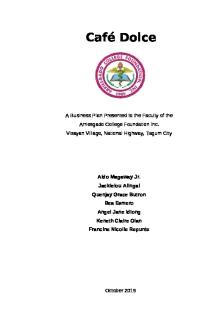
Business Plan
- 26 Pages

Business PLAN
- 3 Pages
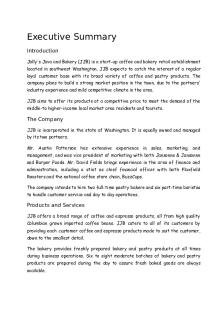
Business PLAN
- 21 Pages
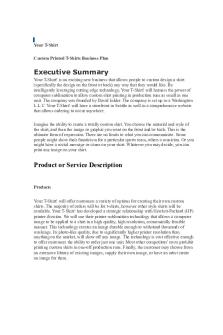
Business PLAN
- 10 Pages

BUSINESS PLAN
- 24 Pages
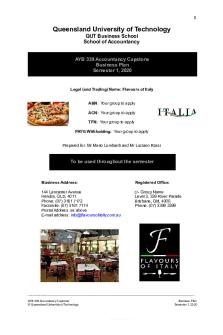
Business Plan
- 28 Pages
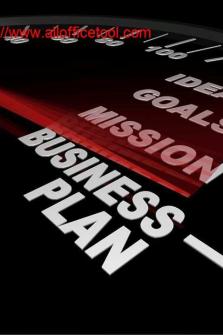
Business Plan
- 21 Pages
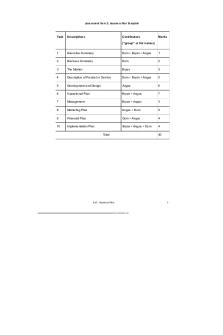
Business plan
- 40 Pages

Business Plan
- 47 Pages

Business Plan
- 10 Pages
Popular Institutions
- Tinajero National High School - Annex
- Politeknik Caltex Riau
- Yokohama City University
- SGT University
- University of Al-Qadisiyah
- Divine Word College of Vigan
- Techniek College Rotterdam
- Universidade de Santiago
- Universiti Teknologi MARA Cawangan Johor Kampus Pasir Gudang
- Poltekkes Kemenkes Yogyakarta
- Baguio City National High School
- Colegio san marcos
- preparatoria uno
- Centro de Bachillerato Tecnológico Industrial y de Servicios No. 107
- Dalian Maritime University
- Quang Trung Secondary School
- Colegio Tecnológico en Informática
- Corporación Regional de Educación Superior
- Grupo CEDVA
- Dar Al Uloom University
- Centro de Estudios Preuniversitarios de la Universidad Nacional de Ingeniería
- 上智大学
- Aakash International School, Nuna Majara
- San Felipe Neri Catholic School
- Kang Chiao International School - New Taipei City
- Misamis Occidental National High School
- Institución Educativa Escuela Normal Juan Ladrilleros
- Kolehiyo ng Pantukan
- Batanes State College
- Instituto Continental
- Sekolah Menengah Kejuruan Kesehatan Kaltara (Tarakan)
- Colegio de La Inmaculada Concepcion - Cebu


